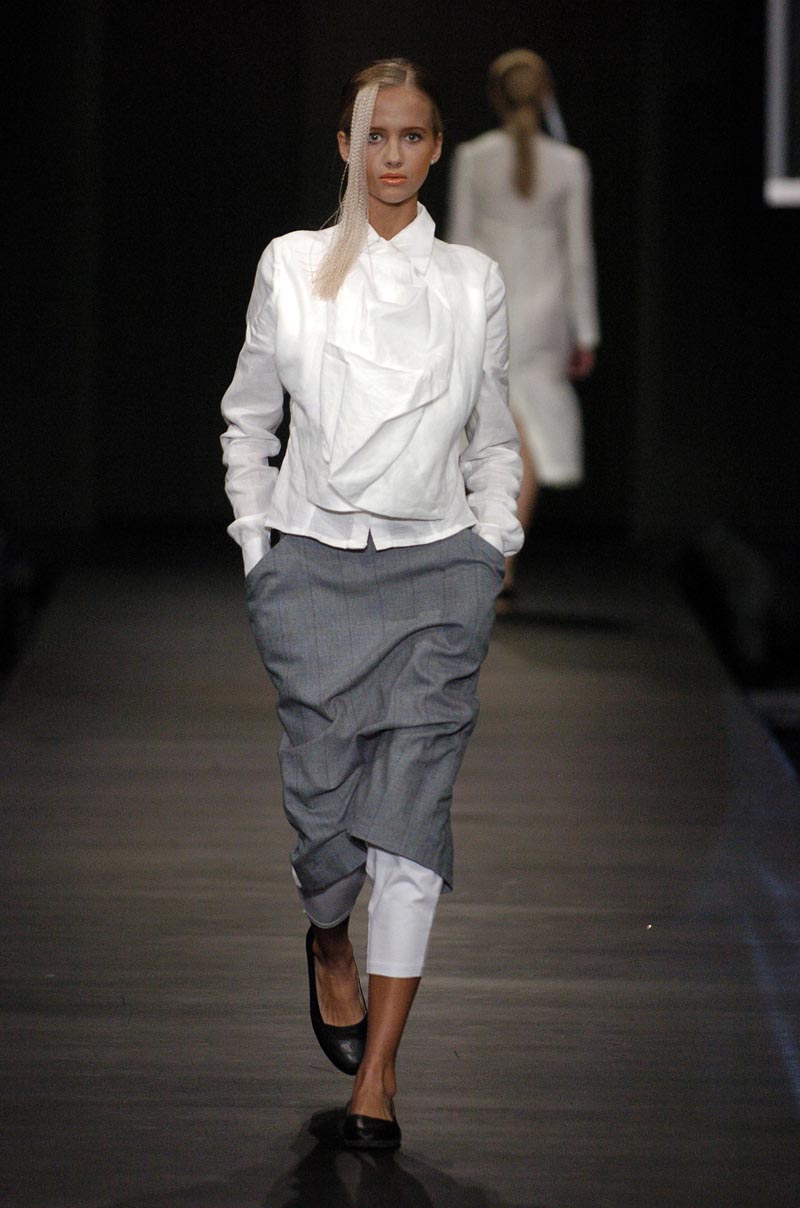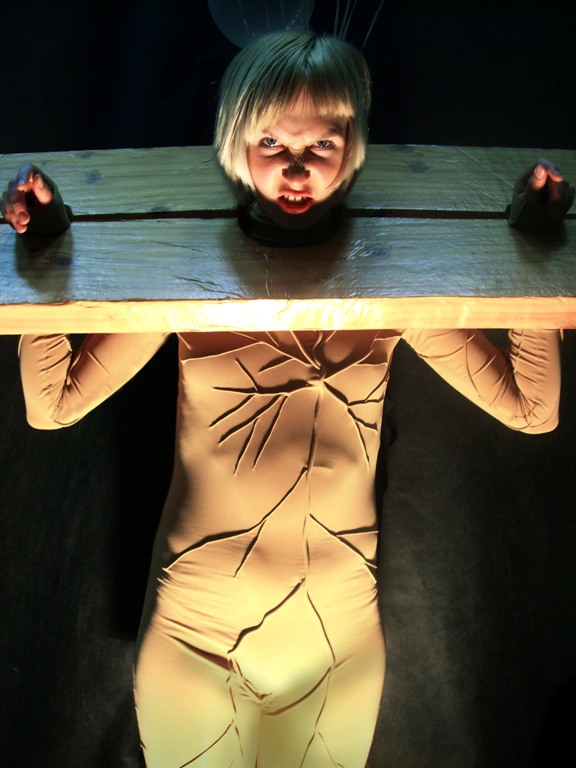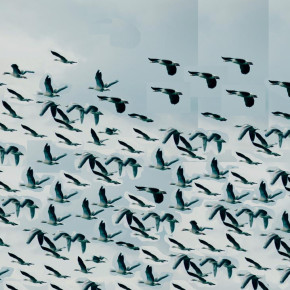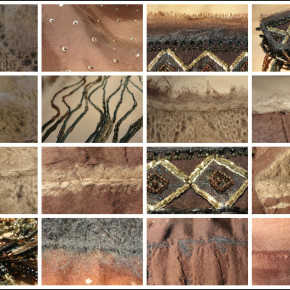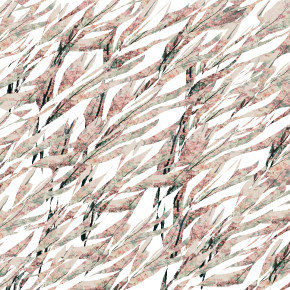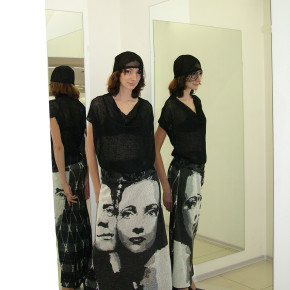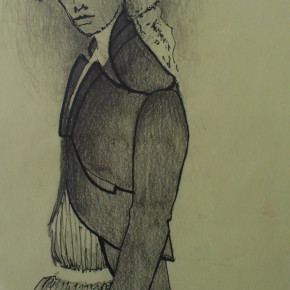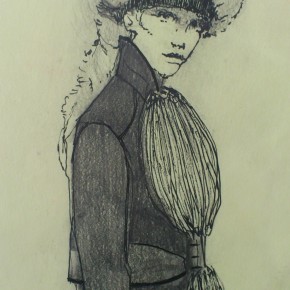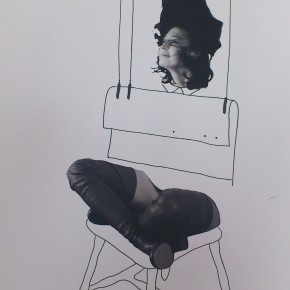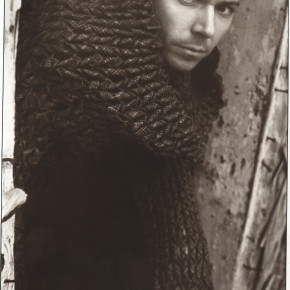| СПЕЦИАЛИЗАЦИИ И ДИСЦИПЛИНЫ
СПЕЦИАЛИЗАЦИЯ «ДИЗАЙН КОСТЮМА» Специальность «Дизайн костюма» изучает свойства и средства композиции, цвет и колористику, пластическое моделирование, текстильный дизайн, технологию швейных изделий, конструирование, макетирование, дизайн — проектирование. Теоретические курсы знакомят с историей костюма, основами проектирования, стилями. Большое внимание уделяется формированию пространственного, объёмного мышления. Студенты изучают особенности проектирования готовой одежды («prеt-а-portе»), готовой одежды люксового сегмента («prêt-a-porte de luxe»), креативной одежды. Высокие требования предъявляются к графической подаче эскизов. СПЕЦИАЛИЗАЦИЯ «ДИЗАЙН ТРИКОТАЖНЫХ ИЗДЕЛИЙ» В России всего три высших учебных заведения выпускают дизайнеров трикотажа, и одно из них – кафедра «Дизайн костюма» Омского государственного института сервиса (OFDS). Специальность «Дизайн трикотажных изделий» существует более 25 лет. На первых курсах студенты, помимо общей учебной программы специальности «Дизайн», изучают технологию трикотажа и трикотажного производства, учатся создавать авторские переплетения, трикотажные полотна и изделия из них. Лаборатория кафедры позволяет работать как на ручных машинах, так и на промышленных, в том числе и компьютерных, работать с разными видами пряж и с нестандартными материалами. На старших курсах на занятиях по спецграфике и по проектированию много внимания уделяется работе с принтами и созданию авторских изделий. Уникальность подготовки дизайнеров по трикотажу на кафедре «Дизайн костюма» Омского государственного института сервиса – в широчайшем спектре возможностей выпускников – от работы на крупном промышленном производстве до создания уникальных индивидуальных моделей высочайшего уровня. ДИСЦИПЛИНА «ДИЗАЙН-ПРОЕКТИРОВАНИЕ» Дизайн-проектирование является ведущей дисциплиной специальности. Главные задачи дисциплины – это наиболее полно познакомить студентов со всеми способами, приемами, методами работы в проектировании, привить культуру проектирования и широту мировоззрения, умение раскрывать свои творческие способности, грамотно пользоваться полученными знаниями в профессиональной среде. Проектирование костюма – это творческая проектная деятельность, целью которой является создание гармонично организованного костюма, аксессуаров и всех дополнений к нему, которые наиболее полно удовлетворят материальные и духовные потребности человека. Основной задачей курса является не научить проектировать все, а научить пользоваться этапами проектировочных действий, как методом творческого поиска в формообразовании костюма, показать последовательность и взаимосвязь проектировочных действий, их содержательное значение в решении ситуационных задач. Работа над любой проектной задачей предполагает большой объём внимания. Чем выше профессионализм, тем больше объём внимания. «Объём внимания» — это нарабатываемое качество, требующее постоянную фокусировку сознания на важных аспектах проектной задачи. Поэтому очень важно в процессе выполнения проекта удерживать внимание не только на главном, но и на второстепенном – неочевидном. Том, что даёт новое видение, прочтение, интерпретацию, а именно – авторскую концепцию костюма. ДИСЦИПЛИНА «КРЕАТИВНЫЕ МЕТОДЫ ДИЗАЙН-ПРОЕКТИРОВАНИЯ» Знакомство с креативными методами творчества происходит в формате трёх проектов. Первый проект – « Единичное изделие. Концепция самодостаточности или 8К », второй проект – «Арт-концепт: аксессуар + видеоряд », третий – «Платье как искусство». Прое́кт (от лат. projectus — брошенный вперёд, выступающий, выдающийся вперёд, торчащий) — это уникальная деятельность, имеющая начало и конец во времени, направленная на достижение заранее определённого результата, создание определённого, уникального продукта или услуги, при заданных ограничениях по ресурсам и срокам, а также требованиям к качеству и допустимому уровню риска. Каждый проект – это система, где важны все условия. Все элементы системы связаны между собой и могут повлиять на конечный результат. В архитектуре есть понятие тенсёгрити — термин, введённый ученым и архитектором Ричардом Бакминстером Фуллером, который обозначил этим словом «свойство каркасных структур, в которых задействуются цельные детали, работающие на натяжение, и составные детали, работающие на сжатие, таким образом, что каждая деталь функционирует с максимальной эффективностью и экономичностью». Это определение очень точно отражает структуру создаваемых артефактов, говорит о важности комплексности в работе над проектами для получения уникального результата. «Цельными деталями» внутри проектов являются задачи и зоны внимания, а «составными деталями» являются условия, качества и контексты упражнений. ДИСЦИПЛИНА «ПЛАСТИЧЕСКОЕ МОДЕЛИРОВАНИЕ» Костюм – это пространственная структура. Основной потенциал новых дизайнерских идей – в пространственных поисках. Дизайн стал трёхмерным. Деталь не просто лежит на плоскости другой детали, она имеет сложные пространственные решения, глубину, сборку «на ребро», сложную систему подрезов, разрезов, скручиваний. Вещи продаются с инструкциями для того, чтобы владелец знал способы ношения, вариантность взаимодействия с фигурой. Трёхмерное проектирование практически невозможно осуществить способом графических зарисовок. Линия, изображённая на листе, в пространственной структуре может оказаться и разрезом, и сгибом, и складкой. Оптимальным способом пространственного мышления является техника бумагопластики. Бумага близка по своим пластическим характеристикам пластике ткани, способна трансформироваться в оболочковые структуры. Любой разрез и сгиб на бумаге с лёгкостью переводит плоскость в объёмно-пространственную структуру. Поняв все направления пластического моделирования, очень легко проводить подобные преобразования с любой деталью и формой. Перевод плоскостного мышления в объёмное лишает человека внутренних запретов на активное вторжение в пространство костюма. Методика курса доступна начинающим дизайнерам, даёт сиюминутный результат генерации креативных идей и их практической реализации, качественно меняет понимание пространственных возможностей формы, разрушает предсказуемость дизайнерских решений, благодаря экспериментаторскому характеру упражнений. ДИСЦИПЛИНА «МАКЕТИРОВАНИЕ» Авторский курс по макетированию костюма состоит из трёх больших тем. Это – основы макетирования, макетирование драпировок и модульная система. В рамках каждой темы предусмотрена система упражнений и заданий, позволяющих максимально полно исследовать возможности каждого приёма и научиться использовать их на практике. На занятиях осваиваются принципы формообразования стандартных форм и основных покроев, изучаются принципы взаимодействия объёмно-пространственной структуры костюма и фигуры человека, конструктивные особенности деталей. Это позволяет создать необходимые предпосылки для возникновения нестандартных, творческих, но рациональных и обоснованных решений. ДИСЦИПЛИНА «ТЕКСТИЛЬНЫЙ ДИЗАЙН» Как далеко могут завести художника поиски «того-чего-не было»? Наконец-то генеральной линии в моде нет! Возможен любой подход. Существует право выбора, каждый может создавать свой образ. Ткани играют в моде большую роль, позволяя говорить об авторском стиле дизайнера одежды. Разработка уникальных авторских полотен для создания высокохудожественных изделий позволяет перейти на качественно новый декоративный уровень мышления, развивает прикладное начало в работе. Изучение исторически сложившихся технологий оформления текстиля и авторских методик работы с полотном дают возможность проследить потенциал пластических свойств и визуальных эффектов фактуры. Дисциплина наглядно знакомит с возможностями количественного и качественного генерирования креативных идей в работе с авторскими полотнами, методами их воплощения, раскрывает потенциал понятий, определений и доступности предложенных технологий. Методика разрушает предсказуемость дизайнерских решений благодаря простоте и экспериментаторскому характеру упражнений. Курс представляет авторскую концепцию методики, терминологии и формулировок, включает систему упражнений, сопровождается большим количеством визуального материала. |
SPECIALIZATIONS AND DISCIPLINES
SPECIALIZATION «OUTFIT DESIGN» The «Outfit design» course offers students the chance to learn fundamentals of composition in design and graphic means of expression, color science and coloristics, sculptural modeling, textile design, outfit production technology, outfit construction, outfit mocking-up, fundamentals of outfit design theory and methodology. And, the theoretical courses introduce the students to the history of outfit and style. Much attention is paid to the developing of the three-dimensional thinking. Students learn peculiarities of creating both “Pret-a-Porte” and “Pret-a-Porte de Luxe” clothes. High standards are applied to sketching. SPECIALIZATION «KNITWEAR DESIGN AND TECHNOLOGY» There are only three colleges in Russia that offer a «Knitwear Design and Technology» course for their students. One of them is the «Costume Design” department of the «Omsk State Institute of Service»(OFDS). With its well-established facilities and devoted team, it offers students all around Russia the chance to excel in their skills in the knitwear design for more than 25 years in a row. Within the first year of the study program students are not only introduced to the knitwear technology and production but also explore their inner ability to create by engaging in their creation of knitted textiles, yearns and garments. This specific training program is combined with both core BA and MA degree subjects and with courses which specifically focus on fine arts, design and illustration both manual and CAD operated. «Knitwear Design and Technology» course’s laboratories offer students the chance to gain experience on both manual machines and on industrial computerized ones. All sorts of yarns and surface textiles are used within the working process — from standard to creative and recycled ones. At the later stages of this educational process more attention is placed on polishing the student’s design skills in knitwear technology for both menswear and womenswear. Every graduate is able to easily handle every stage of design process from pre-production development to creation of a collection of elaborate design pieces. The course also focuses on the graphic and print design skills that can be applied both for textiles and print industries. Our main goal is to always deliver the widest range of skills and opportunities to our students. Undergraduates will be encouraged through the course to develop their individual identity through their work, by a fusion of the course’s design direction and the excellent craft skills and knowledge of technological developments that they have acquired. Our graduate designers describe how they value the course’s informed engagement with their career development with experience across a whole spectrum of activities and practices. This includes the course’s ability to offer them practical advice, guidance and opportunities across the possible pathways open to them — as entrepreneurs or employees. Our graduates are employed throughout all the levels of the fashion business, from creating their own individual collections and running their own business to working for big retail companies all over the world. DISCIPLINE «DESIGN PROJECT» Design project is the leading subject of the course. Amongst its main objectives are introducing students to all methods and ways of working with projects, widening their horizons, unleashing their creative potential and teaching them how to utilize their new skills in a professional environment. Costume design is a creative process, which aims to materialize in well-proportioned clothing, accessories and all necessary attributes that fully satisfy utilitarian and spiritual needs of their owner. The main objective of the course is not to teach how to design just about anything, but to teach how to use every step of a project as a method of creative search in the shaping of a costume; to illustrate the importance of succession and correlation between different stages of design, and their importance in problem solving. Work on any project task such as this requires significant amounts of attention. The greater the level of professionalism, the higher volume of attention it demands. ‘Attention capacity’ is a quality one can develop constantly focusing on important aspects of the assignment. That is why it is vital to pay attention to both major and secondary things when working on a project, as the secondary, or not so obscure, is what ultimately gives it a new interpretation, the artistic concept of a costume. DISCIPLINE «CREATIVE METHODS OF DESIGN OUTFIT» The study of creative methods of the design outfit moves through three projects. The first one is called “A single garment. The concept of self-sustainability”. Next, is “The art concept: accessories and video”. And, the final one is “Dress as art”. The word project comes from the Latin word projectum, «before an action», that is something that comes before something else in time. It is a unique activity, which has a beginning as well as an end. This leads to achieving certain results including to creating a unique product or service with various determinations in time, resources, and also meeting the applicable demands of quality and risk. Every project is a system where all the key conditions are, by definition, important. All the components of the system are connected and influence the final result. In architecture there is the term tensegrity which was coined by the architect and inventor Buckminster Fuller who defined this term as a structural principle based on the use of isolated components in compression inside of a net of continuous tension, in such a way that all the components work together to achieve maximum effectiveness and efficiency. This term precisely reflects the nature of the artifacts created during the course as it details the importance of the complex approach in design. The whole components inside the projects are the tasks and the zones of attendance; the compound components are conditions and prerequisites. DISCIPLINE «SCULPTURAL MODELLING» The ‘Outfit’ is a spatial structure. One of the main potentials in design lies in three-dimensional search. The outfit detail is not just spread over the surface of other details, but has a complicated spatial relationship and depth. It can have a series of vertical pleats as well as a special system of incisions and twistings. Garments are sold with instructions in order for the owner to understand the various ways in which it can be worn. The three-dimensional design is not possible to do with only graphic sketching. The lines on a piece of paper in three-dimensional structure can become a cut, foldor a pleat. The most appropriate way of three-dimensional thinking is the sculptural paper modelling, which means folding paper into shapes representing objects. Paper is quite close to the fabric in its plastic characteristics. Any cut or fold on the paper can transform a flat surface into three-dimensional structure. Understanding the sculptural modeling gives the freedom to make easy transformations with any detail and form. Three-dimensional thinking releases the person from the inner taboo of transforming the form. The methodology of the course is approachable for young designers; it gives a quick result in generating new ideas and in its realization. This course changes the understanding of the spatial possibilities of the form and helps in achieving unexpected decisions because of the experimental exercises. DISCIPLINE «DRAPING ON THE STAND» The author’s course dealing with draping on the stand includes three big themes: the fundamentals of mocking-up, draping and working with modules. There is a system of tasks and exercises in each theme, which allows students to explore the possibilities of each method and the realization of them on practice. During the workshops, students probe the principles of making standard forms, exploring the interaction of the garment with the body and the study of construction of details. This helps to achieve the creative as well as the unusual but based on relevant and sufficient decisions. DISCIPLINE «TEXTILE DESIGN» Where can the endless search for ‘something that’s never been done before’ take an artist? Finally, there isn’t any major direction in fashion. Any approach is possible. There’s choice, and everybody can have their own vision. Fabrics play an important role in fashion as they say a lot about designer’s personal style. Designing of artistic fabrics for high-end clothing items shifts students’ thinking to an entirely new, decorative level and helps to stay very hands-on in their work. Studies of historic textile technologies and methods of working with woven products enable us to explore the potential of draping and visual effects of different textures. The subject introduces students to the possibilities of quantity- and quality-based ideagenerating in working with artistic fabrics, as well as methods of their implementation. It also uncovers some notions and features of technologies currently available. The method eliminates predictability in designer solutions thanks to simplicity and experimental nature of assignments. Curriculum features original concepts and terminology and includes a system of exercises with a variety of visual material. |


